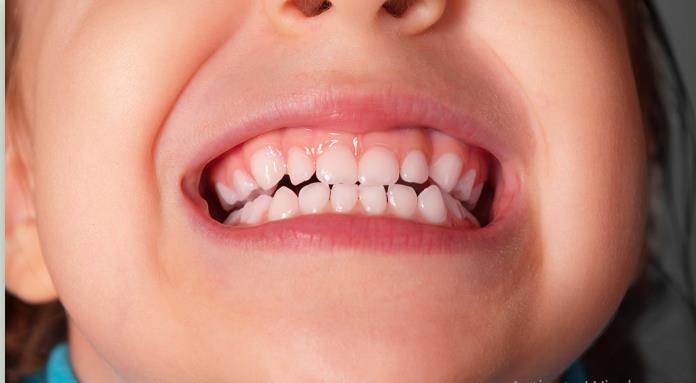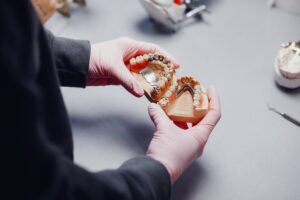A pediatric dentist may find cavities in your little one’s mouth during a routine dental checkup. It’s crucial to address these, as some might be restored using composite fillings, while in others, the cavities can be wide and deep enough that they can’t be restored by simple restoration. Such large cavities might need a cap or a dental crown.
Pediatric crowns play a crucial role in maintaining your child’s dental health. These crowns protect and restore teeth that are damaged or at risk of decay.
Understanding the different types of pediatric crowns can help you make informed decisions about your child’s dental care. Let’s discuss everything you need to know about dental crowns for kids.
Why are Pediatric Crowns Required?
Pediatric crowns are caps used to restore large cavities in children’s teeth. Your child may need a crown due to big cavities that can be caused by various reasons.
The cavities can be the result of eating habits, lack of oral hygiene, or simply due to thumb sucking. Thumb sucking for those above four years of age can lead to protrusion of front teeth and cavities in the teeth that are present at the back of the mouth.
Some common scenarios where your child may need pediatric crowns are
- Decayed Tooth – In teeth with severe decay, the crown is a stronger option to save the tooth.
- Pulp Procedure – Following pulp therapy and root canals in children (pulpectomy and pulpotomy), a crown is necessary to protect the tooth.
- Fracture of Tooth – In some cases, if a tooth is fractured in children, pediatric crowns are used to restore its appearance.
- Space Maintainers – In some cases, particularly in anterior teeth, crowns are used as part of space maintainers to prevent shifting due to premature tooth loss.
Many parents think that the faulty teeth in their kids’ mouths should be pulled out as any way permanent teeth will replace them. But these deciduous teeth are crucial to their position for proper eruption and sequelae to permanent teeth.
The fundamental purpose of these pediatric crowns is to save the faulty tooth until it reaches its shedding time. Saving the deciduous tooth means keeping it intact in its position to prevent the permanent teeth from misalignment crowding that may necessitate orthodontic treatment in early adulthood.
What Kind of Crowns are Available for Pediatric Patients?
After the pulp therapy for your child’s faulty tooth is done, it needs to be secured with a crown. The type of crown you choose depends on many factors, including the time of shedding of milk teeth and the eruption of permanent teeth, durability, esthetics retention, and cost. Pediatric crowns can be of the following types.
- Stainless Steel Crowns – These are crowns made of stainless steel. They are the least aesthetic but cost-effective. They can be opted for on teeth where the shedding time is near. These crowns have greater adaptability and are easier to contour, trim, and adapt.
- Stainless Steel with White Facings – These are stainless steel crowns with tooth-color resin adhered to them. They are aesthetically better. However, they need a relatively good amount of tooth reduction. They are generally costlier than stainless steel crowns. They have good strength. One disadvantage is that these crowns tend to stain with time and are not plaque-resistant.
- Zirconia Crowns – These metal-free crowns can be used in esthetic-demanding areas such as anterior teeth. They are stronger, biocompatible, metal-free, and plaque-resistant. However, they are expensive and require more time for placement.
- Composite Strip Crowns—The dentist makes these crowns chairside using a clear mold or plastic. They are highly esthetic and not very expensive, yet they are technique-sensitive and have low durability. The adhesive of the composite inside the plastic strip should be used properly to adhere to dentin and enamel during placement, which can lead to lesser retention of the crown.
- Polycarbonate Crowns – These are acrylic crowns that come in one shade. The shade can be adjusted by luring cement (called tooth glue). They are durable but technique-sensitive, needing high moisture control while placed. They are also aesthetic and economical.
Conclusion
Pediatric crowns are essential to keeping primary teeth intact. Whether made of stainless steel for durability or zirconia for aesthetics, each type of crown specifically protects and restores your child’s teeth. A detailed discussion with your family or the pediatric dentist will help determine the best crown for your child whenever they need it.
Get High-Quality Dental Care from Experts at Valley Ridge Dental
Visit Valley Ridge Dental for expert advice and quality pediatric dental care. Our experienced team is dedicated to providing the best dental solutions for your child’s needs.
Schedule an appointment today!
Or Call us at 6514390322





